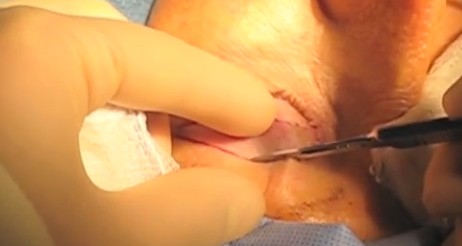Ptosis is a medical term which refers to a disorder of abnormal drooping of the upper eyelid. In some cases, the eyelid droop is hardly visible, while in very rare instances, the eyelid may cover the complete pupil.
The upper eyelid of both or one eye can droop due to weakening of the muscles that help keep them upright, or due to damage of the nerves controlling those muscles. On certain occasions, the upper eyelid skin can become loose and droop across the eye.
Ptosis is corrected via eyelid surgery called blepharoplasty. Doctors lift up the drooping upper eyelids via the ptosis repair surgery. The excess fat and skin is surgically removed and the eyelid muscle functioning is enhanced.
Symptoms of ptosis
Some of the signs and symptoms of ptosis are listed below:
- Drooping of affected eyelids
- Vision difficulties
- Increased tearing of the eyes
- Affected people may be seen frequently lifting their eyebrows in an effort to raise the eyelids.
- Patients typically tend to tilt their head backwards when then want to see below the lid.
The degree of eyelid droopiness tends to differ from one patient to another. The intensity of accompanying symptoms may also vary during the day as per the effects of medications and fatigue levels.
Causes of ptosis
- The primary cause of ptosis is aging. However, children can also be affected by this abnormality. Ptosis that is present from birth is referred to as congenital ptosis.
- Droopy eyelid or ptosis is one of the major symptoms of an autoimmune condition called myasthenia gravis. If doctors suspect this disease to be the underlying cause of ptosis, then they may order nerve functioning tests. The eyelids usually droop due to weakening of the levator muscles in the eyelids.
- Ptosis can also occur due to any kind of ocular injury, eye surgeries, or as a side effect of cataract.
- Horner’s syndrome or oculomotor nerve palsy, a type of neurological condition, can also cause vision difficulties and eyelid drooping.
- Eyelids can also droop due to formation of an ocular tumor which presses the eyelid nerves.
- Defects in the facial anatomy, systemic diseases such as diabetes, multiple sclerosis, etc. can also result in this eyelid anomaly.
- Stroke, cancer including tumors occurring on a lung apex, or brain tumors can increase the vulnerability to developing ptosis. This is because tumors can cause considerably adverse muscle or nerve responses.

Ptosis repair via surgery
Ptosis is an ocular disorder and hence needs to be corrected by an eye surgeon. Ptosis repair surgery should only be conducted after thorough examination of the underlying causes by a specialist.
In case of congenital ptosis, doctors usually suggest prompt remedial surgery to prevent worsening of the abnormality. For age-associated ptosis, a plastic surgeon will surgically lift the affected eyelid/eyelids.
Ptosis repair and treatment is also dependent on correct diagnosis of the underlying cause; whether it is caused by a preexisting neurological condition, a muscle disorder, or an ocular disease. Myasthenia gravis patients can usually experience remission of the symptoms with correct medications. Sometimes when the symptoms are extreme, doctors may perform surgery to tauten the levator muscles and raise the affected eyelid.
Ptosis repair surgery can help improve the appearance and vision. If the levator muscles are excessively weakened, then the doctor may stitch the eyelid to the skin below the eyebrow. The muscles in the forehead then take over the role of the levator muscles and assist in lifting the eyelid.
Surgeons may occasionally perform multiple operations to correct the movement of the eyelid and to make them appear symmetrical.
Untreated cases of ptosis can result in decreased visibility, or poor vision for the rest of life.
Recovery from ptosis repair surgery
The eye is a fragile organ. Hence, proper aftercare post eyelid surgery is vital to getting good results.
Around 3 to 6 weeks of recovery period is usually required for the effects of ptosis repair surgery to become completely noticeable. It may also be noted that the recovery period for patients can last between 3 to 6 months. Hence, any decision to re-operate should only be taken after much deliberation and consultations with the doctor.
It is also important to remember that the upper eyelid may not completely show the lift after surgery, till all of the internal swelling has healed. Occasionally, ptosis can worsen due to under or over correction, or because of asymmetry of the two eyelids, or irregular shape of the lids.
Proper and complete eye care is a very important part of the recovery process. It is important to provide adequate rest to the eyes. Tightness around the operated region may also be experienced by the patient. In such cases, the doctor may prescribe painkiller medications. Patients need to be determined and patient, and you will gradually begin to see and feel the effects of ptosis repair surgery.
Cost of ptosis repair surgery
The average cost of ptosis repair surgical procedures cannot be accurately determined. Depending on the diagnosis and the amount of surgical work that needs to be done, ptosis repair surgery can cost anywhere between $2,000 and $4,000, or even more.
Insurance will cover some of costs if the surgery is carried out for medical reasons. It usually does not cover ptosis repair surgery done for cosmetic purposes.

